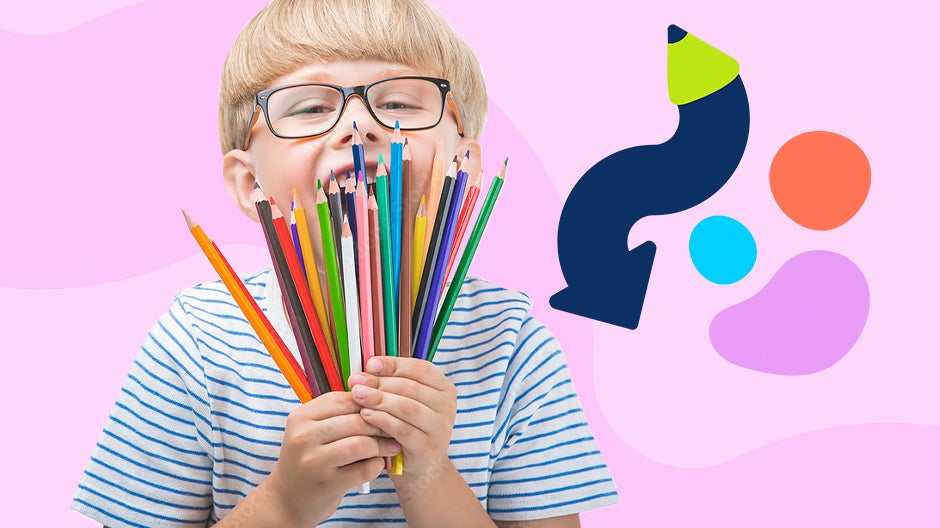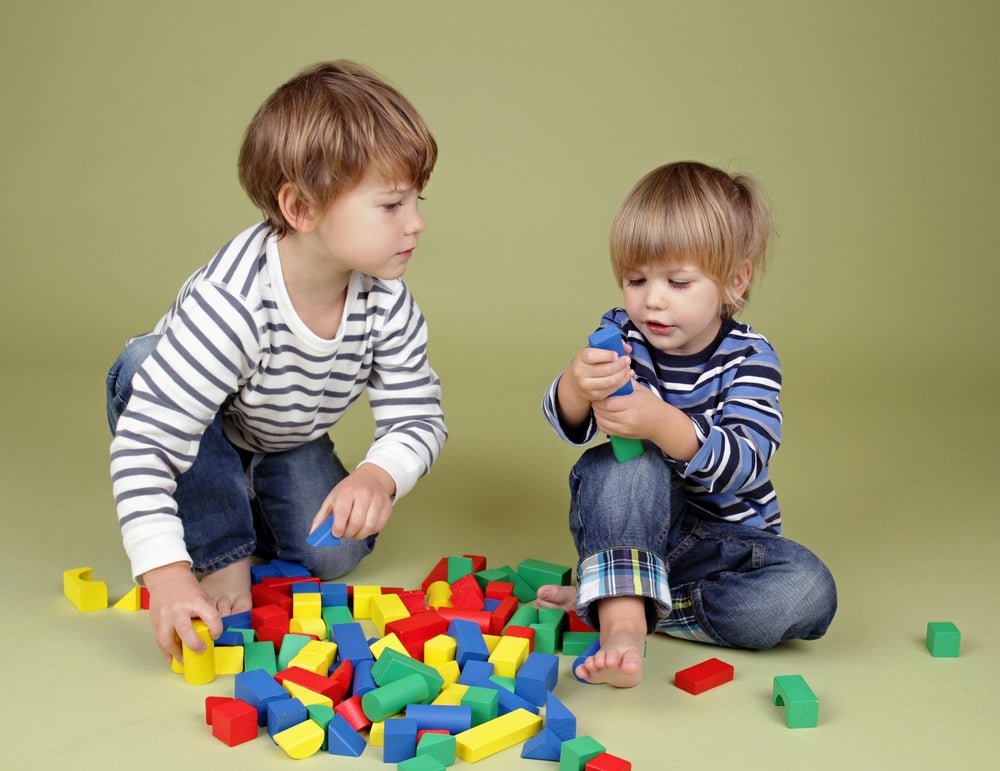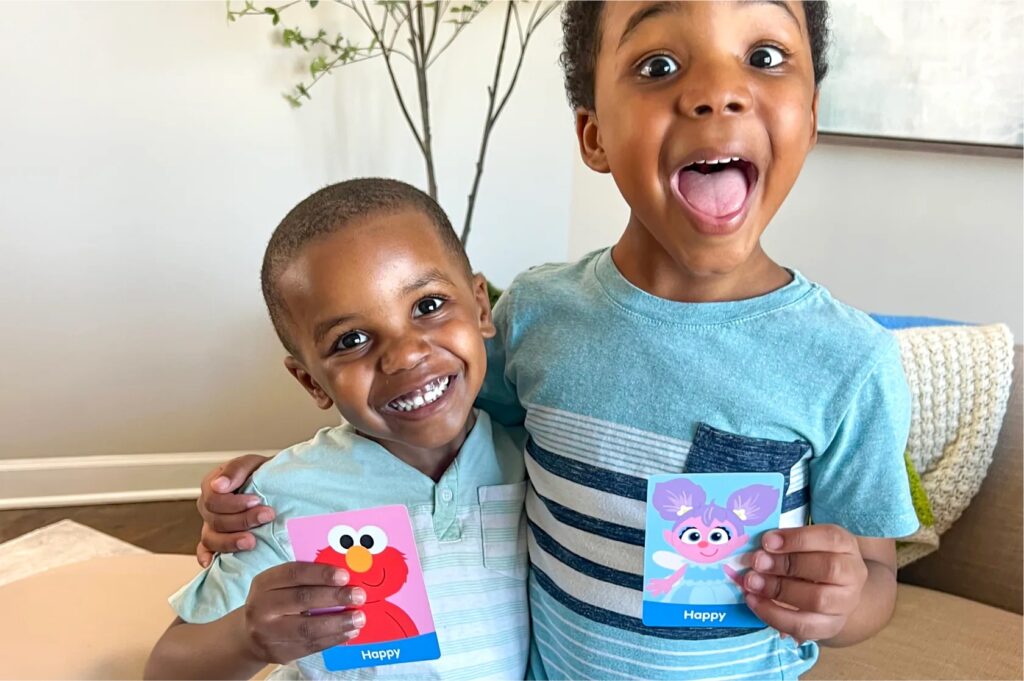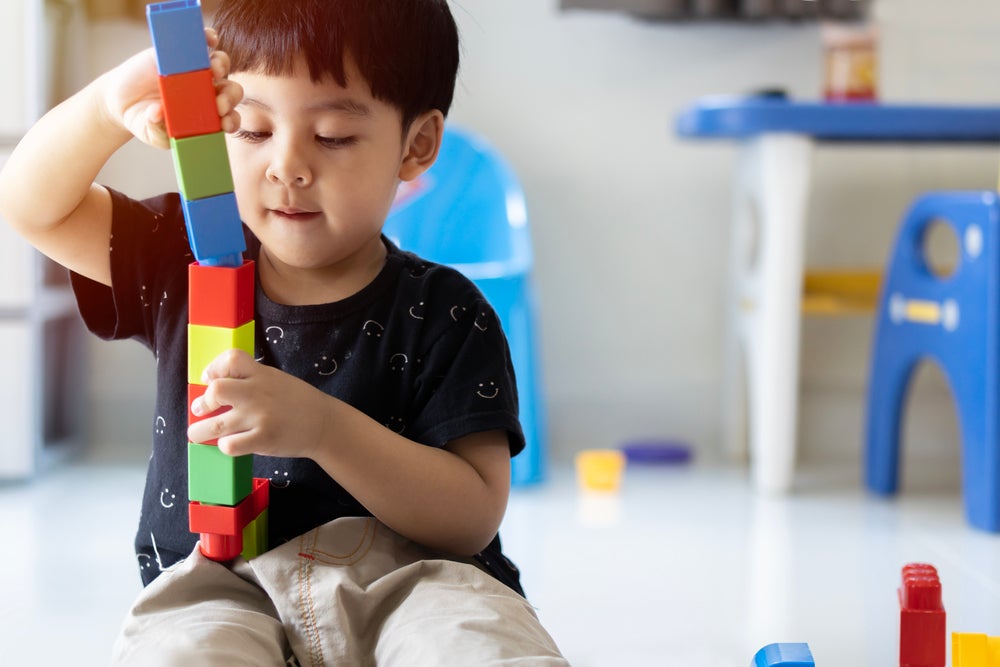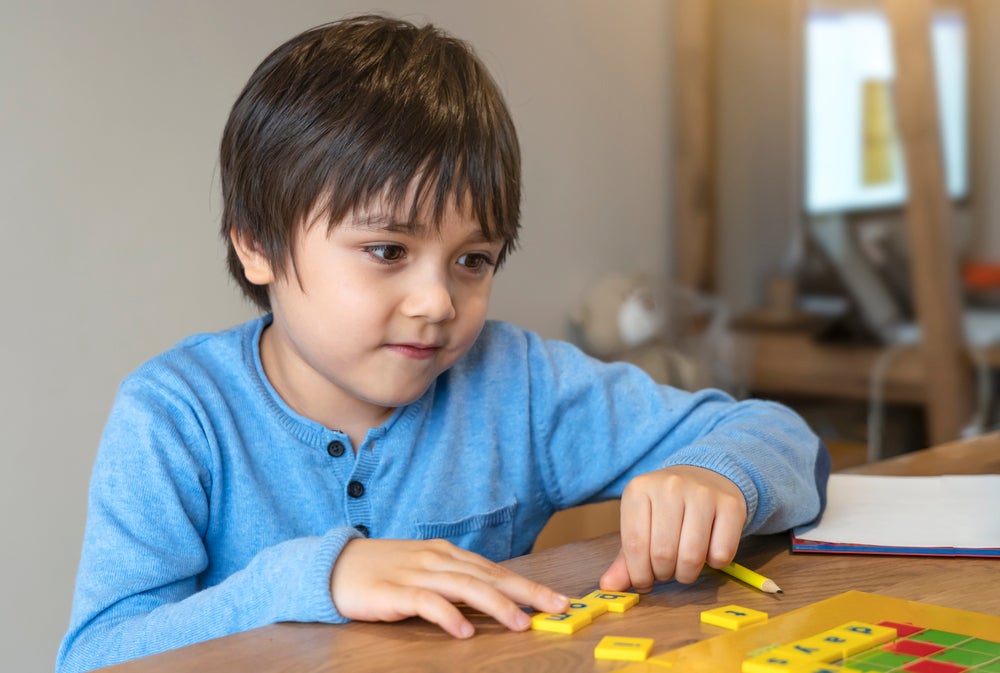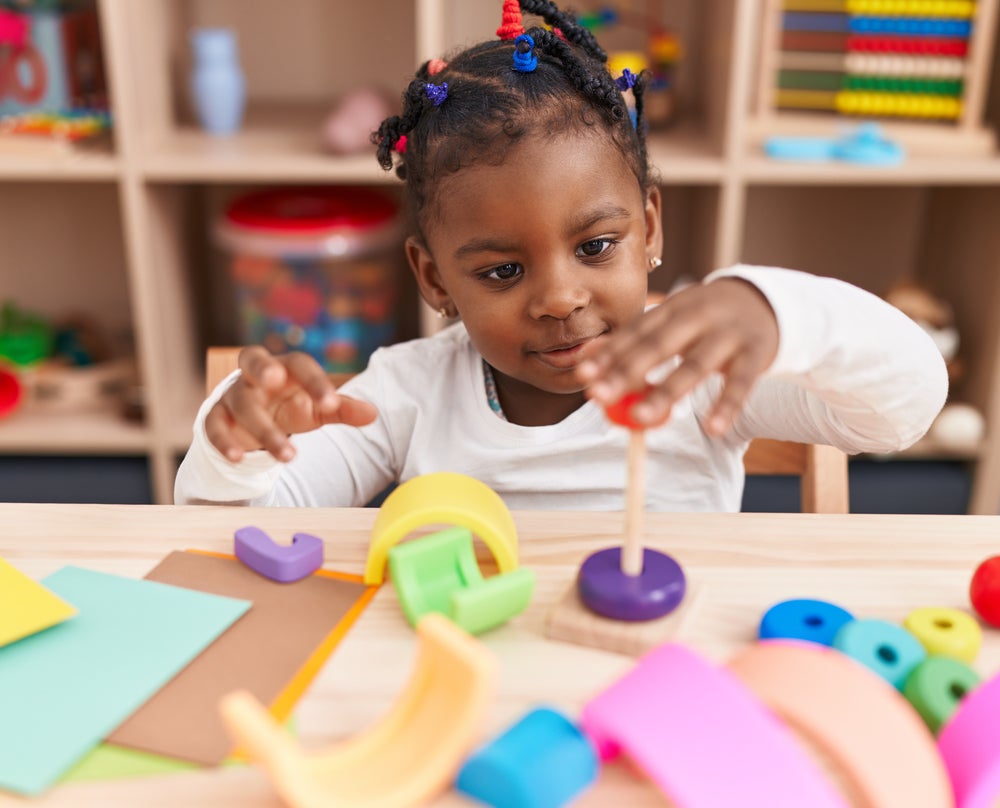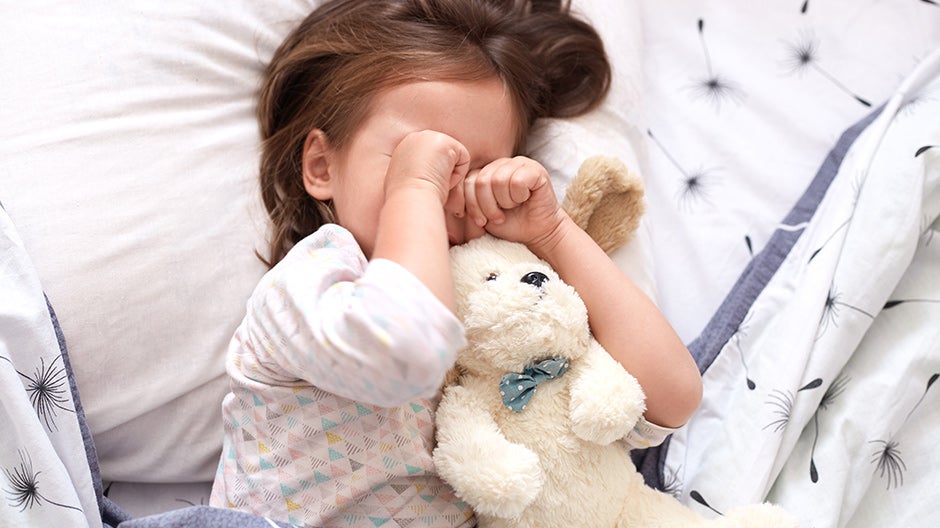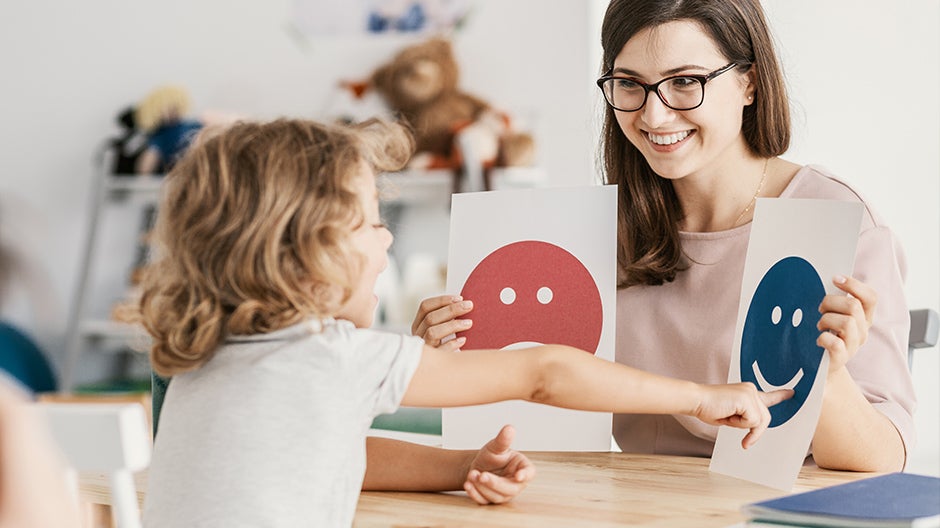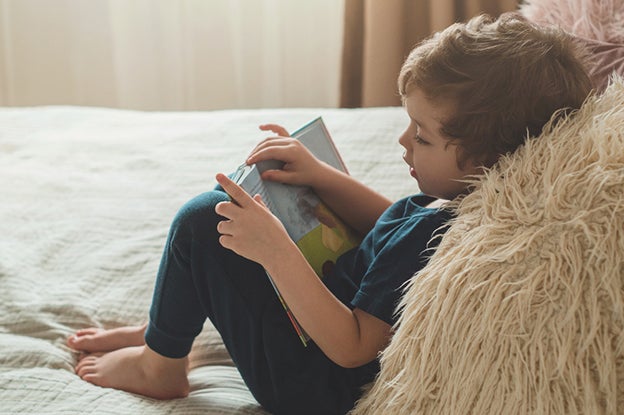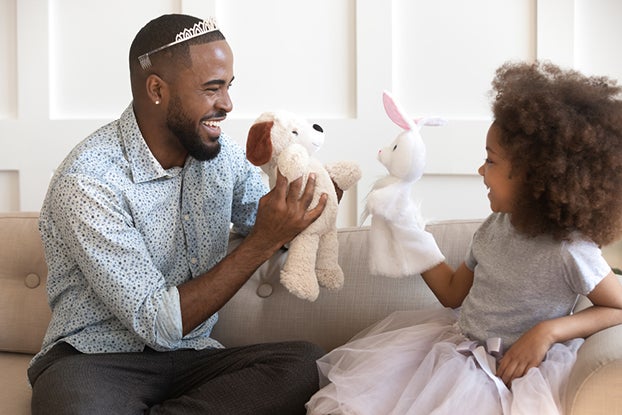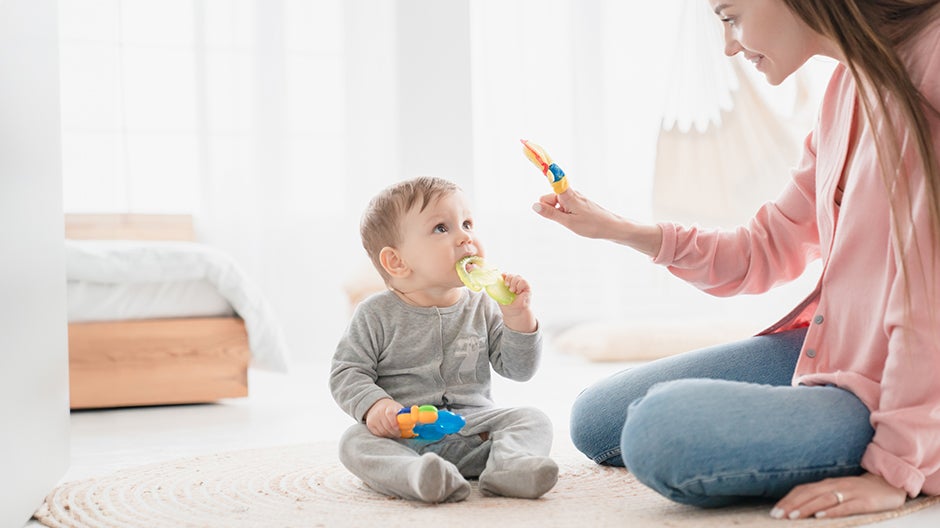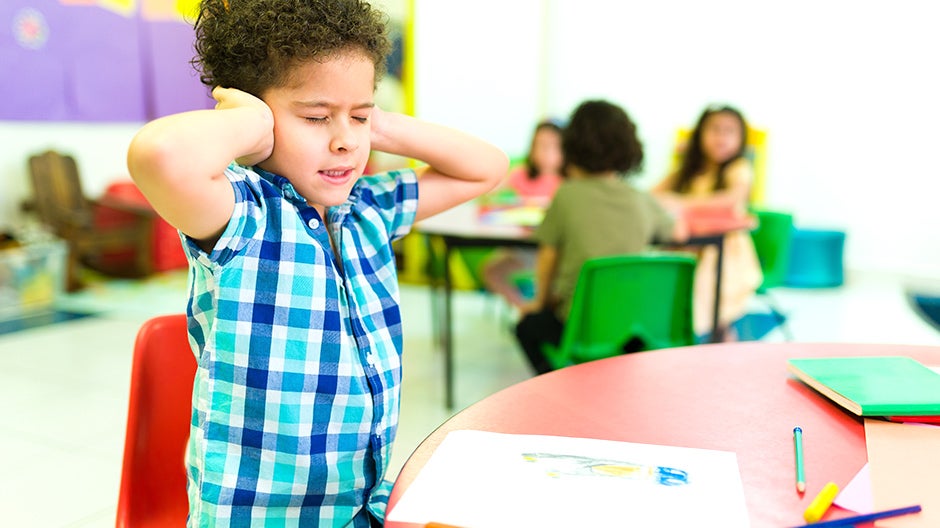What do using a toothbrush to brush the dog, drawing on the wall with permanent markers, and building a house for the cat out of couch pillows all have in common?
Creativity!
Creativity is the magic of problem-solving, self-expression, and imagination. Most kids don’t need to “learn” it. They have a ton of it! But sadly, they tend to lose it as they get older. Our role as caregivers is to nurture their creativity and help them become the problem solvers of the future.
The Short Cut
- Creativity helps kids (and adults!) adapt to change, innovate, and solve problems
- Creativity matters in work and school! It’s a top request from employers regardless of their field.
- As kids’ brains develop and they focus on “right” answers and fitting in, their early creativity declines
- Encouraging creativity when kids are young helps them stay creative as they get older
- Developing the 5 C’s doesn’t need to be complicated. You can make a big difference in only 15 minutes a day!
Your Kid’s Creative Genius
Creativity has been linked to divergent thinking, which is all about generating lots of ideas without judgment (including ones that break real or perceived rules). You’ve probably seen plenty of this with your kids. (“What should we have for dinner?” “Ice cream! Cookies! Flowers! Play dough!”)
The opposite of divergent thinking is convergent thinking, which is all about narrowing down ideas, making decisions, and censoring options (“No, we’ll eat healthy food because that’s what our bodies need.”). Formal education encourages convergent thinking, especially when there are goals around finding “the right answers,” and our brain naturally looks for shortcuts because it saves time and energy.
But both types of thinking are really important, and both are necessary in different situations. It matters that kids learn the safest way to cross the street, how to express anger in a healthy way, and that 2+2=4. But it also matters that kids maintain the ability to think creatively. Today they’re wearing shoes on their hands, but one day they might be using ice-fishing boots to design better gloves for working in subzero temperatures!
Creativity has been associated with many important life outcomes, including being more adaptable to all kinds of change, as well as innovation and problem-solving skills. It’s one of the most in-demand workplace skills sought after by companies today (and is projected to stay that way into the future).
All of this to say, there’s a lot we as caregivers can do to support creativity in our children. As a mom myself, I happen to know firsthand that many of the activities we do today to support creativity in our kids can be beneficial for the whole family.
Simple Ways to Support Creativity
1. Celebrate Boredom! Unstructured time in which a child must find something to do on their own, using their own imagination, is a tremendously powerful way to support creativity. “Boredom” is a problem that can be solved with creativity, and creativity can help keep boredom from coming back.
Researchers have found children have lost up to 12 hours of free time per week compared to previous generations. In the past, many of those hours were spent escaping “boredom” by coming up with ideas for what to do.1 Because children often have packed schedules with school, extracurricular activities, and organized sports (plus always-on devices to interrupt quiet moments), they lack an opportunity to creatively decide how to fill their time.
2. Allow for (Some) Mess and Chaos. Some research has found that having slightly disorderly spaces is associated with increased creativity (although it’s not clear whether mess causes creativity or the two simply correlate). In one study, participants with messy bedrooms had higher levels of creativity than those in perfectly tidy rooms. The hypothesis is that “disorderly environments seem to inspire breaking free of tradition, which can produce fresh insights.”
You can establish guidelines for what passes as appropriately “messy” (or which rooms are allowed to have minor messes and when, versus those that are not allowed) in your home (messiness can’t be an excuse for chaos that makes others in the family uncomfortable!). In our household, the shared spaces like the kitchen and living room need to remain tidy, but my children’s bedrooms are allowed to get messy (within reason) during the week as they play and study in their spaces.
3. Daily Movement. There is strong evidence that movement fosters creativity (and the opposite—being stagnant in our bodies can stunt creativity). Participants in one study who walked, even if it was indoors on a treadmill, demonstrated higher creativity levels than those who sat during the study.
This is something you can all enjoy together! For instance, you can make an after-dinner walk through your neighborhood a daily activity that helps you bond AND boosts everyone’s creativity.
4. Access to a Range of Materials. Not surprisingly, it’s easier to be creative when you have access to a wide variety of inspirational materials that help you create. Consider having bins of various art supplies (colored paper, crayons, water paints) and building materials (such as milk jugs, cotton balls, popsicle sticks, glue) available for child-directed use.
Encourage your child to come up with their own ideas for what to make rather than simply following step-by-step instructions to make “perfect” versions of a specific project. It’s all about the process over the finished product.
5. Emphasize the Process over the Finished Product. As your child is building, taking things apart, or creating something, encourage their effort and celebrate them making their own decisions and expressing themselves, rather than “correcting” them or waiting until they’re done to comment on the finished product. The journey should be just as important as the destination. Once they’re done, feel free to reflect on what they did along the way, and express how much you enjoyed watching them be creative.
As an example, the son of one of our team members once surprised them with a note he’d written at age 4. They praised his letters, then gently corrected his spelling. They knew instantly it was the wrong thing to do by the look on his face, and he lost interest in the game of writing notes immediately. The next time their son tried, they just played along and didn’t sweat the spelling. He had a lot more fun (and he learned more too)!
6. Dare to Dream (and Daydream). The beauty of dreaming and daydreaming is that we’re free from constraints and self-censoring judgments, which means we can often come up with more creative ideas than when we’re deliberately “trying” to be creative.
We can encourage this in our children by asking them about the dreams they had the night before, talking about our own daydreams, and using language like “What if…” and “I was just using my imagination to think about…” We can also model what it looks like to come up with a wide range of possible solutions to a problem (divergent thinking!), and perhaps even make some of them silly to show that it’s not always important to get the “right” answer immediately.
For example, if a wheel falls off a favorite truck and disappears, you can suggest a range of possible solutions that run the gamut from possible to funny, like replacing the wheel with a round candy, taking off the other three wheels and inventing the world’s first “hopping car,” or building a new wheel out of various craft materials.
Creativity across Developmental Stages
Depending on your child’s age and unique developmental trajectory, creativity might look a little different for them than for someone else. But below are some checklists you can use to consider what aspects of creativity you might be observing in your child.
Remember, every child develops differently, so you may see creativity in your child that isn’t on these lists, or that is on the list under a different age from your child’s.
That’s almost certainly OK, given that creativity isn’t a linear “skill” that children need to acquire by a specific age. Rather, creativity includes a range of skills and behaviors that are likely present in abundance, and our role as caregivers is to foster and support them so they don’t get lost.
2-Year-Old Checklist
Can group like items or objects by a category (all the blue things, all the cars)
- This demonstrates awareness that things can relate to each other and leads to identifying patterns and creating new ways to sort and classify.
Asks “why” and “how” questions
- This is important because understanding how things work is necessary for coming up with new ideas (which requires both creativity and curiosity).
Observes and imitates adult actions such as sweeping the floor
- This helps kids understand the world around them, the roles that people play, and how objects function, which helps new ideas sprout.
Points to things in a book when you ask questions like “where is the rabbit?”
- Learning the names and labels for things and listening without getting distracted show developing language and executive function skills, important parts of creativity.
Can solve simple problems, such as standing on a stool to reach something
- Creativity is often about coming up with new solutions for problems! Seeing kids figure out how to do something new or solve a simple problem is an extremely meaningful development in creativity.
Demonstrates “pretend” play, like holding up a banana as if it’s a phone, or feeding a toy block to a doll as if it’s food
- Understanding that one thing can represent something else (symbolic understanding) allows your child to suspend reality to explore new ideas.
Draws attention to themself and what they can do by saying things like “look at me!”
- This shows a child is proud of their accomplishments and wants to share them. When you praise their efforts (rather than the results), you can reinforce their willingness to take chances.
Can draw somewhat recognizable pictures and explain what they mean
- This early ability in self-expression and communicating visually demonstrates an exciting cornerstone of creativity!
3-Year-Old Checklist
Can draw somewhat recognizable pictures and explain what they mean
- A growing ability in self-expression and communicating visually demonstrates an exciting development of creativity!
Asks all the “w” (who, what, where, why) + “how” questions
- A growing understanding of how things work is necessary for coming up with new ideas (which requires both creativity and curiosity).
Can draw a circle
- Drawing circles shows growing fine motor control and hits a milestone along a well-documented drawing trajectory across time and culture. Circles are usually the basis for drawing humans (faces, specifically), which is an important part of visual self-expression and storytelling.
Enjoys making crafts or other projects such as stringing beads and gluing objects together
- This shows your child can make decisions about how they want to complete a project (vs. following prescriptive directions), meaning they have agency and can express themselves.
Can organize objects by one or more features (all the big blue cars)
- This demonstrates a growing awareness that things can relate to each other and leads to identifying more complex patterns and ways to sort and classify.
Experiments with aesthetics (changing outfits, dressing dolls, styling hair, arranging toys) or producing art
- This shows a desire to exert control over the way something looks or functions, an important (and exciting!) step in self-expression and problem-solving.
Can solve simple problems, such as standing on a stool to reach something
- Creativity is often about coming up with new solutions for problems! Seeing kids figure out how to do something new or solve a simple problem is an extremely meaningful development in creativity.
Demonstrates imagination or pretend play, such as having an imaginary friend or pretending to be a superhero
- Imagining friends or experiences that don’t exist in real life shows the ability to suspend reality, explore new ideas, and try out situations and roles—all important for creative thinking.
4-Year-Old Checklist
Can organize objects by one or more features (all the big blue cars)
- This demonstrates a growing awareness that things can relate to each other and leads to identifying more complex patterns and ways to sort and classify.
Experiments with aesthetics (changing outfits, dressing dolls, styling hair, arranging toys) or producing art
- This shows a desire to exert control over the way something looks or functions, an important (and exciting!) step in self-expression and problem-solving.
Can solve simple problems, such as standing on a stool to reach something
- Creativity is often about coming up with new solutions for problems! Seeing kids figure out how to do something new or solve a simple problem is an extremely meaningful development in creativity.
Demonstrates imagination or pretend play, such as having an imaginary friend or pretending to be a superhero
- Imagining friends or experiences that don’t exist in real life shows the ability to suspend reality, explore new ideas, and try out situations and roles—all important for creative thinking.
Pretends to be something or someone else during play (superhero, firefighter, teacher, dog)
- Pretend play is the perfect time to try on new roles, explore expectations, and get a sense for things that “fit” or “don’t fit” that role. Exploring boundaries is a critical part of creativity!
Makes up words, creates sounds, and experiments with rhymes
- Experimenting with words and sounds is a sign your child likes to explore new things and feels empowered to go beyond how words are “supposed” to be used—a big part of creative thinking!
Can draw and describe pictures
- This is more complex than it sounds! It shows your child’s growing comfort with self-expression, a willingness to share their ideas, and the language skills necessary to articulate their creations.
5-Year-Old Checklist
Comes up with creative or surprising solutions to real life challenges (like using a toothbrush to brush their hair if they can’t find their comb)
- While we may not always like their “solutions,” your child’s ability to think outside the box is a wonderful sign! Allowing them to explore their solutions to see how well they work (or don’t work) is a great way to help them feel empowered and to encourage future problem-solving.
Pretends to be something or someone else during play (superhero, firefighter, teacher, dog)
- Pretend play is the perfect time to try on new roles, explore expectations, and get a sense for things that “fit” or “don’t fit” that role. Exploring boundaries is a critical part of creativity!
Uses pictures and/or invented spelling to create their own stories about real or invented characters
- Using symbols, pictures, and rudimentary or made-up spelling to express ideas is an important precursor to creative writing. At this point, you can help most by praising the effort and encouraging more, without focusing on “fixing” spelling mistakes or penmanship!
Experiments with aesthetics (changing outfits, dressing dolls, styling hair, arranging toys) or producing art
- This shows a desire to exert control over the way something looks or functions, an important (and exciting!) step in self-expression and problem-solving.
Can repeat simple visual (blue, red, blue, red, ___) or auditory (clap, clap, stomp, clap, clap, stomp, clap, clap, ___) patterns
- Being able to detect (and repeat, extend, or fix) patterns shows that your child’s brain is organizing information. Patterns help us make sense of the world, and creativity often involves recognizing, making, or breaking patterns.
Chooses to sing, dance, act, or put on a puppet show
- When your child performs (for you or alone), they organize ideas, express themself, and are open to “failing safely” and receiving feedback. These are big steps in developing creativity!
Uses words like “yesterday,” “morning,” and “tomorrow” to indicate when things happen
- This shows an awareness of different tenses (past, future), as well as the knowledge that things continue to exist (or will exist) even if they’re not right in front of us right now. Knowing that things can continue to exist even when they’re not right in front of us (like “tomorrow”) is important for imagination.
6-Year-Old and Up Checklist
By age 6, many children will be expressing themselves through written words (heavy on the use of invented spelling and grammatical errors, of course!), increasingly sophisticated verbal expressions, and with more recognizable drawings and creations. (You might be surprised by how inventive they can be. I remember when my kids came up with a “cuzins” club with their cousins, and everyone not in the club had to “ceep owt.”)
Children in this older stage will often create or experiment with a specific goal in mind. There’s a strong chance they’ll have preferred aesthetics (favorite colors, certain ways they like to dress), although they’ll likely experiment for years to come.
You may also start noticing a drop in creativity. A focus on conformity and arriving at “the right answers,” along with a desire to fit in and avoid being different or being wrong, may contribute to less creativity as your child gets older.
To some degree, this decline is natural. Our brains are wired to seek the right answers efficiently. But the strategies we covered above can help you model creativity and foster a creative mindset in your child (and in your whole family) if you do notice this decline. You’ve got this!
Supporting Creativity with Begin
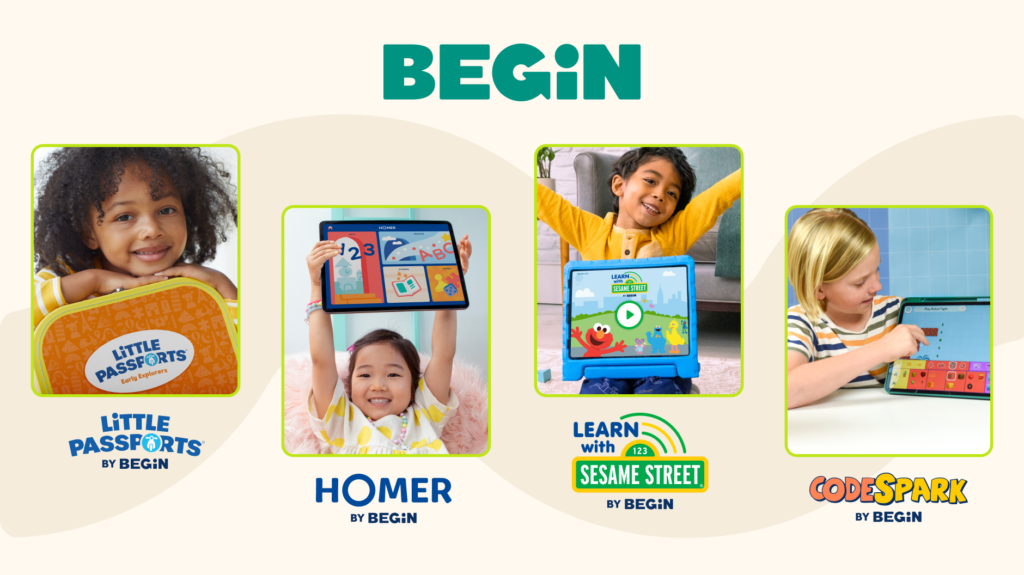
Creativity helps kids thrive throughout their lives. At Begin, we know this, and our approach to learning reflects it.
Whether kids are making art with Little Passports kits, doodling in the HOMER app, building their own video game levels in codeSpark, or something else, our product team creates ways to play where there are no right answers, where imagination reigns supreme, and where being a kid means exploring new ideas in safe, fun ways.
Discover one way it can all come together to give your child their best start to achieving their fullest potential with our comprehensive learning membership, or check out our other parent resources to find more ways to support creativity at home!
